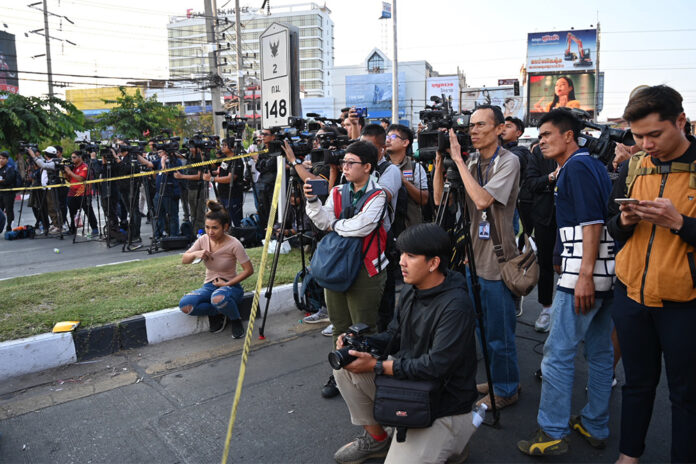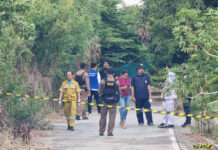
BANGKOK — The government’s proposal to monopolize news coverage during times of national crises drew criticism on Monday from media personalities, who warn that the measure risks eroding press freedom even further.
Digital economy and society minister Buddhipongse Punnakanta, who also heads the government’s “anti-fake news center,” puts forward the idea during a Senate meeting today. He was responding to queries over allegations that the media reported sensitive information during a mass shooting which killed 29 people earlier this month.
But the president of a prominent media guild opposed the measure, saying a one-sided news coverage is counterproductive in times of crises.
“I think this idea is inappropriate,” Peerawat Chotithummo, president of Thai Broadcast Journalists Association, said in an interview. “If only state news agencies are allowed to report news when there’s a crisis, people will question its credibility.”
Thapanee Eadsrichai, a Channel 3 anchorwoman and founder of online news agency The Reporters, also called it a dangerous slippery slope.
“This idea violates freedom of the press,” Thapanee said. “Indeed, reporters can sometimes make errors, but this can be minimized by setting up a news center. If there’s no one to officially keep reporters updated with the latest developments, they will have to seek their own sources for information.”
Under Buddhipongse’s proposal, a selected state news agency will bear the sole responsibility for news reporting during times of crisis like the standoff that unfolded in Korat city.
The policy is aimed at combating “inappropriate contents,” such as photos of deceased victims and information about police movements, which the ministry has no legal power to remove from social media, Buddhipongse said.
Instead of suppressing media freedom, the government should learn from previous incidents on how to properly manage the flow of information, Peerawat said.
“They should take Luang Cave rescue as an example. There’s a news center set up to disseminate official updates to the press and there’s a clearly defined area where reporters can go. Everyone complied with the rules and almost everyone reported in the same direction,” he said.
Although all major media channels saw their ratings surge during the standoff at Terminal 21 Korat shopping mall, the press also came under intense criticism from social media for its allegedly intrusive coverage.
An online news agency, E Jan, closed its platform for five days in a public apology for identifying hiding spots of those stranded inside the shopping mall while the gunman was still roaming around.
The state media regulator, the National Broadcasting and Television Commission, also announced it will summon three TV channels for a reprimand for unspecified ethical violation in their coverage.
A veteran reporter who’s been in the field for nearly 20 years, Thapanee conceded it is difficult to keep everyone in check, especially in the era where everyone with a mobile phone and social media accounts can be a journalist.
“Career reporters should have known some media ethics and understand what is appropriate to report,” Thapanee said. “However, there are many emerging online news agencies that don’t fall under anyone’s oversight. I believe the law has to be amended to keep up with the current media climate.”
Related stories:
Reporters Reckon With Ethics of Cave Rescue Coverage
Watchdogs ‘Too Late’ to Stop Media Spellbound by Slow-Motion Suicide
Celebrity Dies, Paparazzi Frenzies, Public Rages Against Media Machine
















































